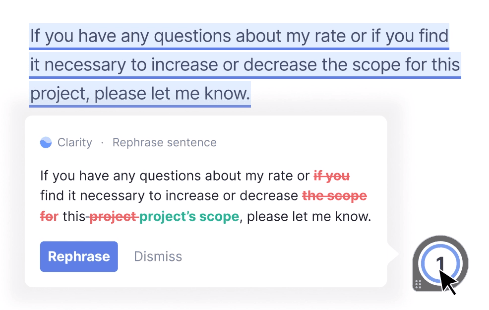How can modern editorial software be your journalists' superpower?
28 Nov 2022
The success of today's best online media companies is no longer only due to great journalists. Equally important is a tool that supports editorial processes using the capabilities of modern technology. See how good editorial software helps journalists.
It's worth defining at the outset what quality means in an online newsroom. Good content is delivered quickly, rich in multimedia , and written in the correct language understandable to the audience. No less critical is arming the material with options to gain its reach . And finally, a good article is written by a journalist who is aware of the reader's context and the circumstances that will accompany the reader when they interact with the text.
One assumption - I know and follow the possibilities of modern AI tools that can create content on a given topic autonomously. However, in this article, I will focus on supporting human journalists in their, for the time being, irreplaceable work.
#1 Your breaking news has to be delivered fast
Accident, victory, premiere, attack, death - some events cannot wait, going through a tedious editorial process. A reader, Google, and social media want this information now, immediately. How to reduce the Time To Publish of breaking news?

To begin with, a journalist needs a "fast track" feature in their editorial system. The requirements for ordinary materials must be divided into two groups - the necessary minimum required for rapid publication and the rest, which the journalist will complete later. Maybe it's enough to set a title, and lead and the news is good to go? After all, the breaking news template can have a predefined photo, content (i.e. More information soon…), categories, and tags, which a reporter can update later anyway. Thanks to this, within several seconds, your news will be online as the first on the market.
Urgent events are often reported directly from the field. A journalist must be able to use basic content creation tools from a mobile device as well. News with a groundbreaking photo or video recorded with a phone should immediately hit the front page and directly compete with the dynamics of social media. Yes, it's a challenge, but isn't modern journalism an increasingly difficult discipline every year?
The best editorial software also speeds up work on ordinary content. Given that the average news story consists of dozens of pieces of descriptive, structural, administrative, reference, and legal metadata, a poorly designed tool leads to a bizarre situation in which a journalist spends more time filling them in than writing the actual content (yes, I’ve seen many such cases among large newsrooms). For clarity, by metadata, I mean, for example, a title, categories, tags, an author, SEO settings, sources and many more.
In practice, much of this information can be automatically obtained from existing places:
-
Even if you eliminated a requirement of unnecessary information, check whether the journalist doesn't have to complete the ones he has already provided once…
-
The author may have his own preferences and settings to be imported, containing metadata describing his work area, specialisation, and favourite options.
-
The system can recommend article settings analysing the author's history and statistics.
-
The system can suggest options based on current newsroom trends.
-
Finally, modern tools automatically suggest metadata based on a live analysis of the content.

It's more than just completing metadata that reporters can do faster. While I don't believe robots will ultimately steal a journalist's job, we have been designing tools in which automated journalism plays a significant role. Based on the text, the AI-controlled robo-reporter recommends images, videos, whole new paragraphs, links and many more. Further, the journalist decides which elements will ultimately go into his material.
Read more: Recommendations mechanisms used in Wirtualna Polska (case study)
#2 There is more than only a text expected
Text is no longer enough. At least not always. Attractive news also includes photos, videos, embedded social media posts, maps and other goodies that increase the power of the message and effectively compete for the reader's attention.
Photos
A journalist needs to access multimedia from their primary work tool. Integration with popular photo agencies allows one to search the entire photo database simultaneously. It is a good idea to teach your technology to recognise human faces, multiplying the results' quality. It may also be a good idea to populate photo metadata with the text surrounding images in articles.

The selected photo doesn’t have to go into the text in its raw form. First of all, a journalist must be able to crop and rotate it without using external tools. It should definitely happen inside the main system.

Further, a gallery in the form of a slider, mosaic, or accordion? A comparison of two photos (e.g., before vs. after) as a moving slider? How about interactive hotspots that reveal additional content to the reader when clicked?

Video
Editorial offices usually use their own video materials (again, a search is a challenge!) and public materials from the most popular platforms such as YouTube, Vimeo, DailyMotion and others. Adding has to be simplified to pasting a link and the software will do the rest. Otherwise, it's a waste of a journalist's time. It should be equally easy to use the wealth of social media. A post from TikTok, Instagram, Facebook or Twitter could go to the article right after entering the URL.
Other embeds
A reporter can also enhance the article in other ways. A meaningful quote, a table with essential data, a stock chart, a review summary in the form of a rate or pros and cons, and a survey are just a few examples of the arsenal that good editorial software makes available to a journalist.
However, the condition for using media and add-ons is a good user experience. In addition to the wealth of possibilities, journalists appreciate the simple, quick service and a live preview of the article. Creators want to see the exact photo, video or Instagram post they inserted, not a symbol in the form of a grey rectangle, placeholder text or other imitations.

#3 Technology helps write better
Today, many journalists use third-party content editors or built-in features of web browsers that check text correctness and spelling. Still, only a few newsrooms have their editorial software integrated with a writing assistant API.
Tools such as Grammarly or Readable (but there are more and in different languages) deal with readability comprehensively , evaluating the so-called FOG index. Grammar, sentence structure, vocabulary, style and tone are analysed on an ongoing basis, and recommendations are ready-made solutions to make the text understandable and consistent with the author's intention.

A writing assistant will show the journalist, for example, too long sentences, the use of words that are not very understandable, the need to use a synonym instead of repetition or excessive use of the passive voice.

Some of these tools assess plagiarism risk by comparing the created text to millions of existing articles. In the era of excessive citation of sources and the negative effect of this type of conduct on the Google robot, such safeguards become critical.
#4 A better start for your content
Gaining popularity, understood as page views of an article, starts with the journalist and his work in the content creation tool. The reporter can compete for the presence and clickthrough rate of the article on the website's main page, Google and social media. How can technology help here?
Image
A visual highlight of the article, first of all, does not have to (although it can) be the same image as the main one in the article itself. Moreover, it doesn't have to be a photo but a video (remember autoplay: on, sound: off:). The important thing is that the featured frame should arouse interest and be technically compatible with the small size of the teaser and the title often placed on it. I’ve often encountered the need to prepare multiple frames for different slots and devices. An image cropper that manages various frames is a must, then. A journalist will also appreciate the option to set an Open Graph image that appears when you publish content on your social accounts.
Title
Its length and how it appears on different devices is easy to check even before publishing. A character counter will compare the title with Google's recommendations , and a preview of a teaser will ensure a good presentation on the homepage. Let's also mention the option to set a special version for SEO and slug (part of the URL after the last backslash).
A/B testing
It's a pity to be limited to one set of titles and images. Technology makes it possible to quickly test several variants proposed by the journalist and, in the end, use the one with the highest CTR.

Labels
A reader naturally directs attention to the keywords "Live", "Breaking", Top Story", and "Watch", so a broad palette of such labels must be available in the CMS of a modern editorial office.
Content
Google's robot, when assessing the value of content, also takes into account many factors, including text length, paragraph and subheadings architecture and other metadata: type of content (news, seasonal, evergreen), tags & categories, adult flag, canonical tag. Management, live communication of errors and warnings, but most importantly, auto-completion and suggestion of the best solutions are features desired by the editorial staff today.
Links
The SEO department loves links in the content, but journalists prefer to avoid inserting them manually at all. However, there is nothing to prevent a machine from recommending the linking of specific words and only informing the author.
An editorial software that blocks the article with technical errors affecting the chance of getting coverage is really not rocket science in 2022.
Read more: News pieces management in Polish media giant (case study)
#5 Reader Experience
The content and metadata are checked and optimised according to best practices. Is the article ready? Is the journalist sure what kind of experience the reader will have after interacting with the material? No? Yet he could!
A preview in the viewer's environment proves helpful, yet in the process of writing an article. The option to view content in a template of your website is a great chance to see how:
- the content fits in the page layout and how it interacts with other surrounding elements. Maybe an automatically added video interrupts the story you are telling at an inappropriate moment, and you want to change that?
- ads affect the perception of content. Maybe too short paragraphs create an unpleasant effect of accumulation of ads, and you can still do something about it?
- a smaller screen on a mobile device creates a different reader experience. Maybe the embedded infographic needs to be more readable, and you should add a link to its full size?

I believe that especially ignoring the mobile device context is a huge journalists mistake. Of course, most editorial workflow systems don’t support reporters in any way. How can you write, check and publish news on a desktop on Friday at 9pm, when the usage of mobile devices often reaches 90% or even more?
And yet, there's nothing to prevent the editorial team from analysing traffic statistics and building awareness on an ongoing basis. During the dominance of mobile traffic at many stages of article creation, the system can effectively remind a journalist of the specifics of the small screen. Decisions about content, settings, or pinning a news story on the homepage must consider the nature of the device.
Almost no journalist loves their content management system
Only a handful of newsrooms, even in the largest media holdings, work on cutting-edge tools built according to their needs, taking advantage of the potential of modern technology. Most editorial offices use crude, built in-house tools, without designers, and a thoughtful process.
The options I listed are a quick sprint on the surface of the most important aspects of a sound editorial system. But the truth is yet different. The entire path of creating a tool for an editorial office must take into account the goals and requirements of the modern online media industry and your organisation from start to finish. With this assumption, at the end of the day, your satisfied journalists will create better-quality content.
Are you planning to modernise your online media business? Read our award winning case study of Wirtualna Polska.

About the Author:
Michał Samojlik - Founder @ Autentika. I enjoy studying how companies work and turn their potential into digital products they love. You can find me on LinkedIn



